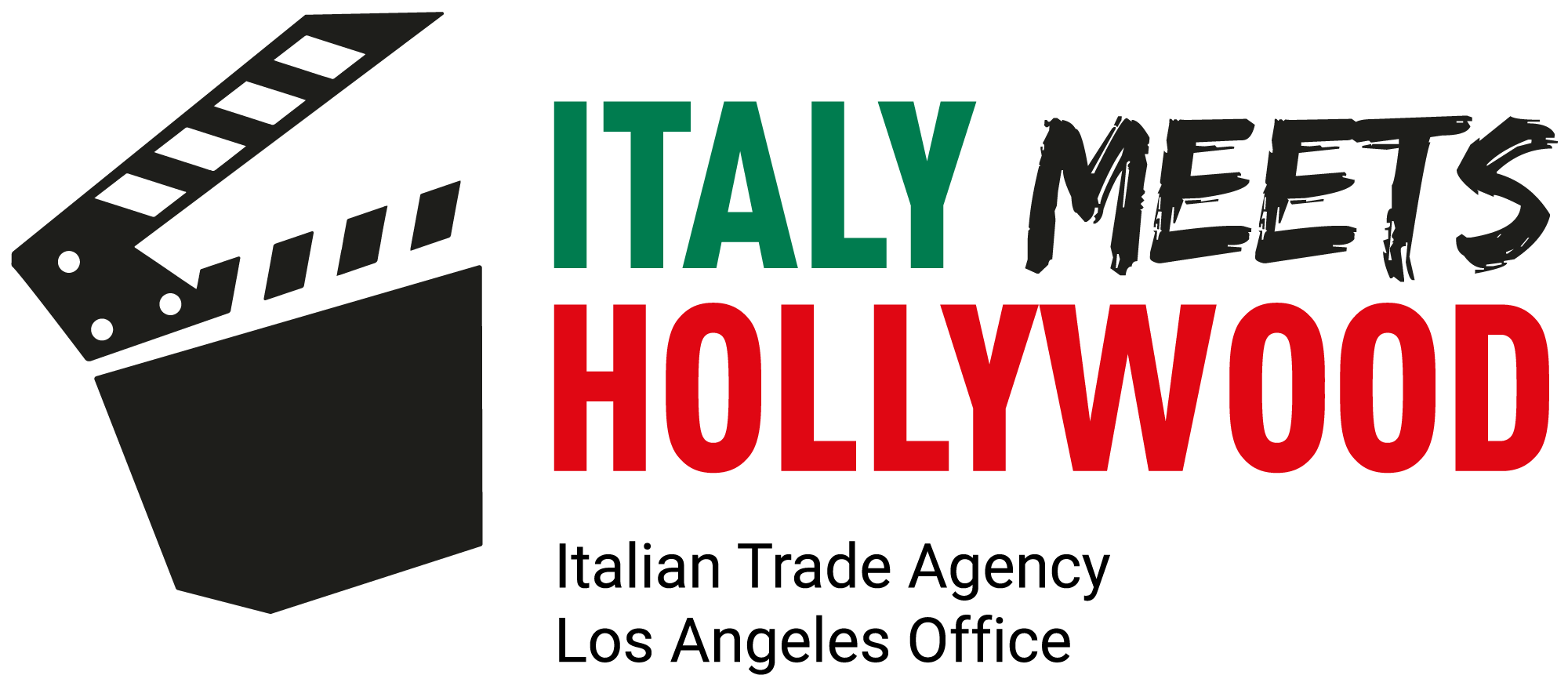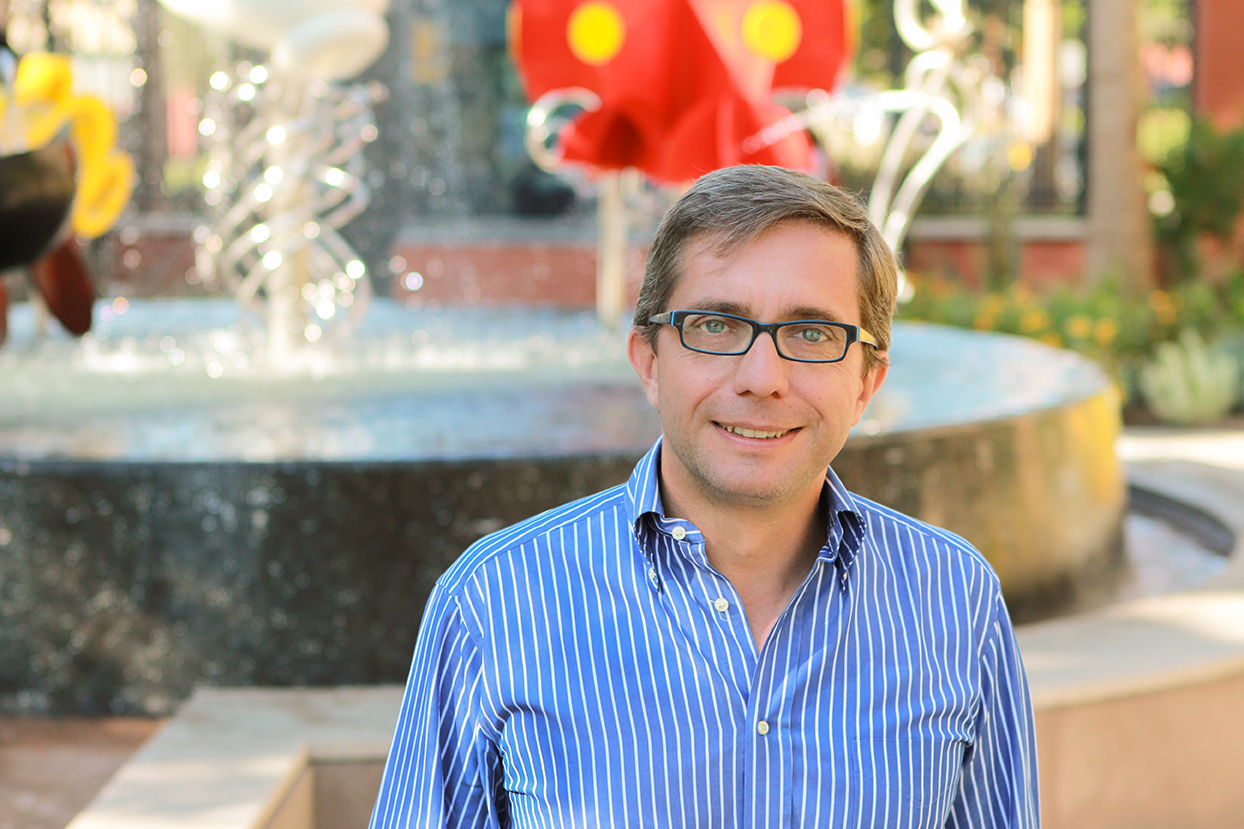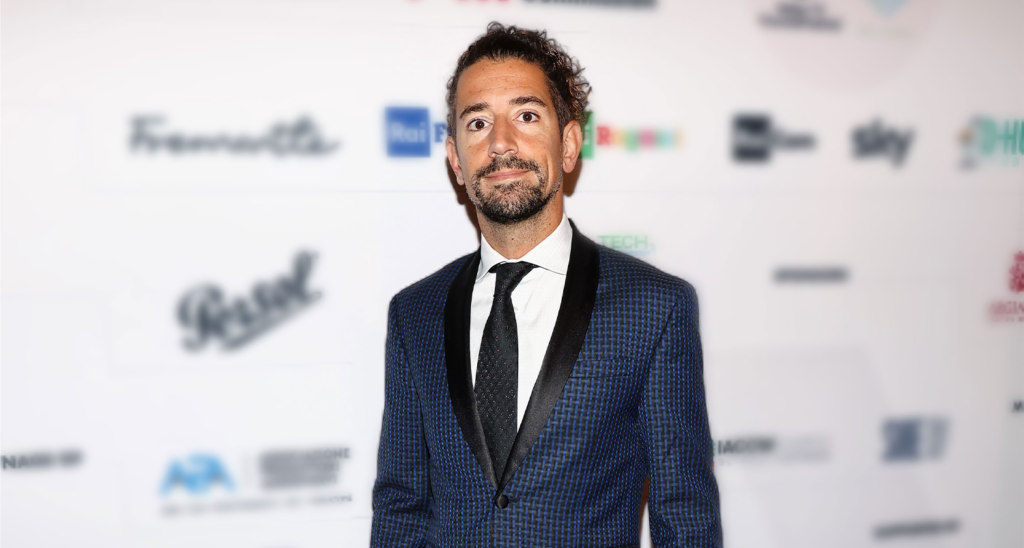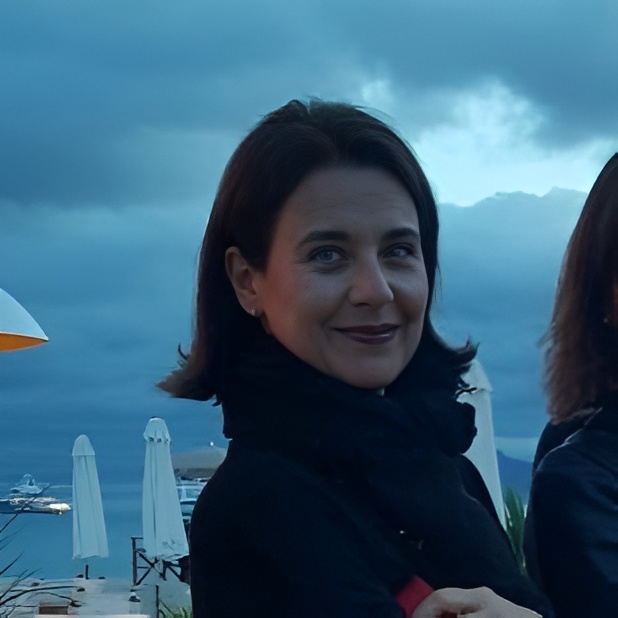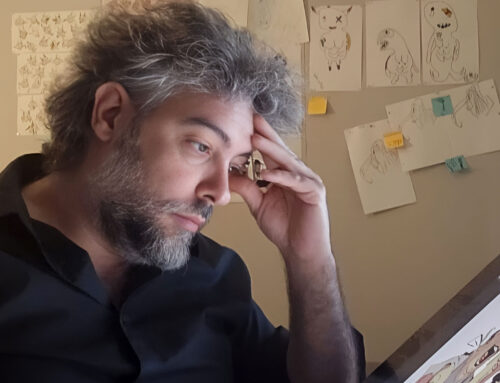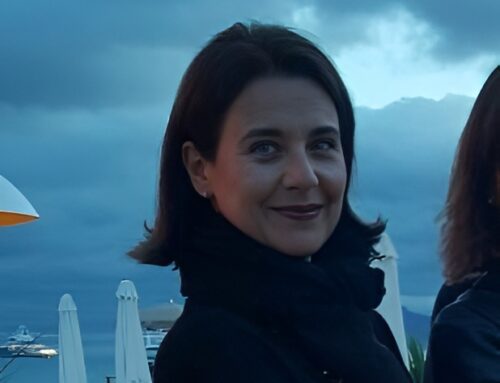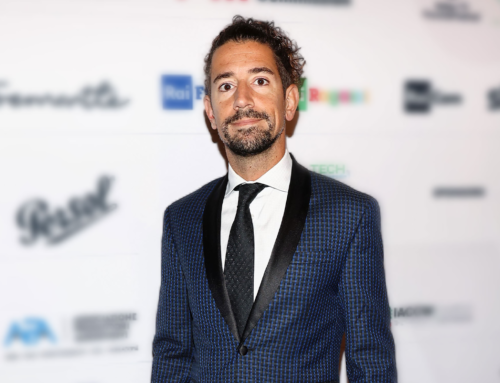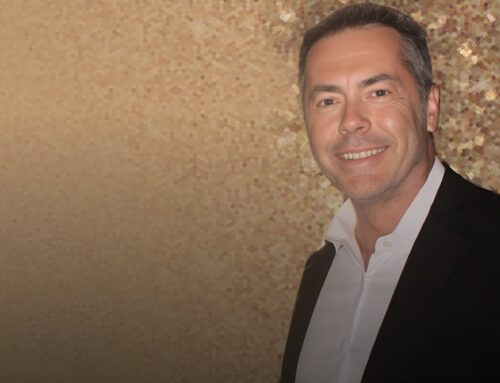Gianfranco Cordara
Gianfranco Cordara is a journalist, writer, and media executive with years of experience in the entertainment industry. He recently served as VP of Global Content Operations for Disney+.
Before that, he was the Head of Disney Digital International and the Publisher and Creative Director of Global Magazines for Disney Publishing Worldwide. He also serves on the board of Radivision and is a senior advisor for Grishin Robotics and several technological start-ups. He teaches at the Master of International Screenwriting and Production at the Catholic University of Milan and at the Master in Applied Psychology at the University of Southern California, Los Angeles.
Mr. Cordara, could you share your journey to the United States after starting your career as a journalist and scriptwriter for Disney Comics, eventually leading to your role as the VP of Global Operations at Disney?
GC: I always wanted to tell stories, and I thought that being a journalist and a scriptwriter was the right way to do it. After graduating in philosophy, I began writing comics for Topolino. However, a few years in, I realized that the role limited what I could accomplish. Consequently, I decided to take a different path and joined Disney as an editor. There, I was fortunate to lead the first digital comics project that Disney launched on iPad in 2010 — Disney Digicomics. Subsequently, I received “the call” to move to the US. In 2014, I became the head of new IP development for Disney Consumer Products. We successfully launched “Palace Pets” and “Star Darlings”, two new IPs created with a toyetic approach, supported by animation, publishing, and digital media. This experience led me to oversee the international business for digital media, including all the own-and-operated websites and social media handles. In 2018, I received a second call: Disney was ready to launch its own streaming service. I accepted the challenge of building Global Content Operations for Disney+ from scratch. I suppose the rest is history…
Your contributions to Disney’s success have been notable. Could you elaborate on the global strategy initiatives you undertook?
GC: There are three projects that, after all these years, still matter to me: the first one was the digital launch of comics with Digicomics, which I previously mentioned. It was important not only because it was my first success but because no one really believed in it at the beginning. It was just me and a colleague (who is now one of my best friends) who started to go and pitch the idea everywhere. Every time we found a closed door, we went one level up. We ended up in the Disney boardroom presenting to Bob Iger… The second one was a new IP that my team and I created for Publishing called “Real Life.” It was the first example of transmedia storytelling, with comics and books that were intertwined by posts on social networks. It was not a success, probably because it came too soon. But it taught me resilience and learning from my mistakes. And, of course, the entire run on Disney+ was an unbelievable experience. I started the team with seven people, and there were 132 when I left, spread out between the US, Europe, Latin America, and Asia.
Meg James wrote a comprehensive article in the Los Angeles Times discussing the challenges that Bob Iger is currently confronting, such as underwhelming box office performances, particularly with brands like Marvel, as well as issues brought on by the strikes. In your view, does this indicate a serious crisis for Disney?
GC: I don’t think that the challenges are just for Iger and Disney. I think they are for the entire industry. We are in the middle of an epochal transformation of the media business, with the transition from the windowing model that worked for decades to a new one led by streaming, in which everyone is trying to figure out what is the right way to distribute content. The landscape cannot be more complex: globalization of content, fragmentation of distribution, economics that are not working as they used to, etc. But ultimately, the biggest issue that every media company has is to produce great content. I always believe that great content finds its way to the consumer: one great example is Yellowstone, launched on Paramount+ and then licensed to Peacock. It’s one of the biggest shows of the last few years, regardless of the mess made with its distribution strategy.
What led to your decision to change company?
GC: It was just the right time. After 20 years in Disney, with the last five at Disney+, I felt I had done everything I could for the company. And I needed a new challenge. I was never scared of making big decisions and moves inside the company. I think now it was the time to make a move outside.
The entertainment distribution landscape has undergone a major transformation with the significant shift from linear TV to the streaming model. How have you seen this change, and how has the industry adapted to these shifts?
GC: Personally, I believe that we have already lived through three different phases of this transformation: at the beginning, it was just Netflix believing in streaming, and it was a cash cow for everyone. They were paying an outrageous amount of money for rights, and all the media companies were more than happy to give away their content. The second phase started when the media companies realized that the Netflix model was working and, in a very “American” way, they thought: let’s copy it. So, everyone rushed to launch their own branded streaming service. But life and business are never so simple: everyone realized pretty soon that they were not making enough money with the new model to make Wall Street happy. So, now we are in the third phase, where everyone is trying to understand which is the right distribution model to extract the maximum amount of value from the content that they produce.
The industry is witnessing the rise of AI, with numerous startups emerging. Have you identified any particularly interesting or promising areas of development in the AI space?
GC: The AI wave in the industry is pretty exciting. I am keeping a close eye on a few standout areas. First off, content recommendation algorithms have become pivotal. It’s not just about suggesting what to watch; AI is getting eerily good at predicting audience preferences and tailoring content offerings. Then there’s the whole world of AI-driven production tools. From script analysis to post-production optimization, it’s streamlining workflows and making our processes way more efficient. Think of it as having a virtual production assistant that never gets tired. Computer-generated imagery (CGI) is another hot spot. AI is pushing the boundaries, creating stunning visuals and special effects that were once reserved for big-budget productions. It’s a game-changer, especially for immersive storytelling. Lastly, I am intrigued by AI’s role in data analytics. It’s not just about numbers; AI is helping us dive deep into audience insights, allowing for more targeted content creation and personalized marketing strategies. In essence, these developments are shaping the future of media, making it more dynamic, efficient, and in tune with what our audiences crave.
Following strikes and budget cuts by Hollywood majors, what is your outlook on the future of the entertainment industry?
GC: The recent strikes and budget cuts in Hollywood have undeniably stirred the industry’s landscape. While challenges exist, I see a resilient and adaptive future for the entertainment industry. In the face of budget constraints, there’s a renewed focus on strategic and cost- effective content creation. We’re witnessing a shift in emphasis towards compelling storytelling, leveraging innovative technologies, and exploring new talent pools. The industry is finding ways to deliver high-quality content without necessarily breaking the bank. Additionally, the rise of streaming services is providing alternative avenues for content consumption. With the direct-to-consumer model gaining momentum, there’s an opportunity for more diverse and niche content to thrive, catering to varied audience tastes. This dynamic shift allows for more agility and responsiveness to evolving viewer preferences. Moreover, the industry has historically shown resilience in bouncing back from challenges. The convergence of traditional studios with digital platforms and the pursuit of global audiences present exciting avenues for growth. While challenges are part of the journey, they often spark innovation and force strategic reevaluations. The entertainment industry has a history of reinventing itself, and I believe this period will catalyze creative and business model innovations, ultimately shaping a vibrant and adaptable future.
Do you believe that international content will play a more substantial role in the future of the entertainment industry?
GC: Yes, more and more. It’s not just because the international productions are cheaper, not subject to strikes and negotiation. The main reason for the success of international content is the fact that audiences internationally actually like this content. For generations, the international audience has been colonized by American content, one form of the soft power that the USA have always used after WWII. Now that most of the streaming services are global, not only they need local content to be relevant in a specific territory, but also audiences around the globe seem to genuinely like foreign content that is not American. The example of the Korean dramas is a perfect one. No one knew they were that good, because no one outside of Korea was actually watching them.
Regarding Italian production companies, what opportunities do you see for them to “export” their products to the USA and the rest of the world?
GC: It’s a huge opportunity. And I think we have IPs, talents, and ideas to make it happen. But… we need to start learning how to properly approach the media market in the US. The Italian production companies have worked for decades only for RAI and Mediaset and are used to deliver projects to those two networks. The US market is completely different and the first step is to acknowledge the differences and work on those. One, simple example is the role of the showrunner, which is neglected in Italy and it’s a key element of the TV production in the US. So, my advice is to study, learn and deliver great projects in the way the American media companies are expecting them.
Ten years ago, in Milan, you spoke about the dynamic nature of storytelling during a discussion on copyrights. Looking back, could you have envisioned the current landscape, and can you now speculate on how the future of storytelling might unfold in the next ten (or more) years?
GC: I always quote Jim Keyes, CEO of Blockbuster, who said in 2008: “Neither RedBox nor Netflix are even on the radar screen in terms of competition.” Two years later Blockbuster was filing for bankruptcy thanks to Netflix competition. And there are hundreds of quotes that aged really badly when trying to anticipate changes in the media industry. My philosophy is keeping the eyes open and bravely navigating the changes: everyone knew in 2000 that the mobile Internet was going to be the future, but it took 8 years (and the launch of the iPhone) to make it happen. So, the future is a mix of AI, metaverse, blockchain. How and when is the fun part to be determined…
What are your career plans following your departure from Disney?
GC: I am working on AI and its implementation in the media industry. I always loved technology and the impact that it has on content production, and I feel this is one of the most interesting challenges that are in front of us.
Share:
Gianfranco Cordara is a journalist, writer, and media executive with years of experience in the entertainment industry. He recently served as VP of Global Content Operations for Disney+.
Before that, he was the Head of Disney Digital International and the Publisher and Creative Director of Global Magazines for Disney Publishing Worldwide. He also serves on the board of Radivision and is a senior advisor for Grishin Robotics and several technological start-ups. He teaches at the Master of International Screenwriting and Production at the Catholic University of Milan and at the Master in Applied Psychology at the University of Southern California, Los Angeles.
Mr. Cordara, could you share your journey to the United States after starting your career as a journalist and scriptwriter for Disney Comics, eventually leading to your role as the VP of Global Operations at Disney?
GC: I always wanted to tell stories, and I thought that being a journalist and a scriptwriter was the right way to do it. After graduating in philosophy, I began writing comics for Topolino. However, a few years in, I realized that the role limited what I could accomplish. Consequently, I decided to take a different path and joined Disney as an editor. There, I was fortunate to lead the first digital comics project that Disney launched on iPad in 2010 — Disney Digicomics. Subsequently, I received “the call” to move to the US. In 2014, I became the head of new IP development for Disney Consumer Products. We successfully launched “Palace Pets” and “Star Darlings”, two new IPs created with a toyetic approach, supported by animation, publishing, and digital media. This experience led me to oversee the international business for digital media, including all the own-and-operated websites and social media handles. In 2018, I received a second call: Disney was ready to launch its own streaming service. I accepted the challenge of building Global Content Operations for Disney+ from scratch. I suppose the rest is history…
Your contributions to Disney’s success have been notable. Could you elaborate on the global strategy initiatives you undertook?
GC: There are three projects that, after all these years, still matter to me: the first one was the digital launch of comics with Digicomics, which I previously mentioned. It was important not only because it was my first success but because no one really believed in it at the beginning. It was just me and a colleague (who is now one of my best friends) who started to go and pitch the idea everywhere. Every time we found a closed door, we went one level up. We ended up in the Disney boardroom presenting to Bob Iger… The second one was a new IP that my team and I created for Publishing called “Real Life.” It was the first example of transmedia storytelling, with comics and books that were intertwined by posts on social networks. It was not a success, probably because it came too soon. But it taught me resilience and learning from my mistakes. And, of course, the entire run on Disney+ was an unbelievable experience. I started the team with seven people, and there were 132 when I left, spread out between the US, Europe, Latin America, and Asia.
Meg James wrote a comprehensive article in the Los Angeles Times discussing the challenges that Bob Iger is currently confronting, such as underwhelming box office performances, particularly with brands like Marvel, as well as issues brought on by the strikes. In your view, does this indicate a serious crisis for Disney?
GC: I don’t think that the challenges are just for Iger and Disney. I think they are for the entire industry. We are in the middle of an epochal transformation of the media business, with the transition from the windowing model that worked for decades to a new one led by streaming, in which everyone is trying to figure out what is the right way to distribute content. The landscape cannot be more complex: globalization of content, fragmentation of distribution, economics that are not working as they used to, etc. But ultimately, the biggest issue that every media company has is to produce great content. I always believe that great content finds its way to the consumer: one great example is Yellowstone, launched on Paramount+ and then licensed to Peacock. It’s one of the biggest shows of the last few years, regardless of the mess made with its distribution strategy.
What led to your decision to change company?
GC: It was just the right time. After 20 years in Disney, with the last five at Disney+, I felt I had done everything I could for the company. And I needed a new challenge. I was never scared of making big decisions and moves inside the company. I think now it was the time to make a move outside.
The entertainment distribution landscape has undergone a major transformation with the significant shift from linear TV to the streaming model. How have you seen this change, and how has the industry adapted to these shifts?
GC: Personally, I believe that we have already lived through three different phases of this transformation: at the beginning, it was just Netflix believing in streaming, and it was a cash cow for everyone. They were paying an outrageous amount of money for rights, and all the media companies were more than happy to give away their content. The second phase started when the media companies realized that the Netflix model was working and, in a very “American” way, they thought: let’s copy it. So, everyone rushed to launch their own branded streaming service. But life and business are never so simple: everyone realized pretty soon that they were not making enough money with the new model to make Wall Street happy. So, now we are in the third phase, where everyone is trying to understand which is the right distribution model to extract the maximum amount of value from the content that they produce.
The industry is witnessing the rise of AI, with numerous startups emerging. Have you identified any particularly interesting or promising areas of development in the AI space?
GC: The AI wave in the industry is pretty exciting. I am keeping a close eye on a few standout areas. First off, content recommendation algorithms have become pivotal. It’s not just about suggesting what to watch; AI is getting eerily good at predicting audience preferences and tailoring content offerings. Then there’s the whole world of AI-driven production tools. From script analysis to post-production optimization, it’s streamlining workflows and making our processes way more efficient. Think of it as having a virtual production assistant that never gets tired. Computer-generated imagery (CGI) is another hot spot. AI is pushing the boundaries, creating stunning visuals and special effects that were once reserved for big-budget productions. It’s a game-changer, especially for immersive storytelling. Lastly, I am intrigued by AI’s role in data analytics. It’s not just about numbers; AI is helping us dive deep into audience insights, allowing for more targeted content creation and personalized marketing strategies. In essence, these developments are shaping the future of media, making it more dynamic, efficient, and in tune with what our audiences crave.
Following strikes and budget cuts by Hollywood majors, what is your outlook on the future of the entertainment industry?
GC: The recent strikes and budget cuts in Hollywood have undeniably stirred the industry’s landscape. While challenges exist, I see a resilient and adaptive future for the entertainment industry. In the face of budget constraints, there’s a renewed focus on strategic and cost- effective content creation. We’re witnessing a shift in emphasis towards compelling storytelling, leveraging innovative technologies, and exploring new talent pools. The industry is finding ways to deliver high-quality content without necessarily breaking the bank. Additionally, the rise of streaming services is providing alternative avenues for content consumption. With the direct-to-consumer model gaining momentum, there’s an opportunity for more diverse and niche content to thrive, catering to varied audience tastes. This dynamic shift allows for more agility and responsiveness to evolving viewer preferences. Moreover, the industry has historically shown resilience in bouncing back from challenges. The convergence of traditional studios with digital platforms and the pursuit of global audiences present exciting avenues for growth. While challenges are part of the journey, they often spark innovation and force strategic reevaluations. The entertainment industry has a history of reinventing itself, and I believe this period will catalyze creative and business model innovations, ultimately shaping a vibrant and adaptable future.
Do you believe that international content will play a more substantial role in the future of the entertainment industry?
GC: Yes, more and more. It’s not just because the international productions are cheaper, not subject to strikes and negotiation. The main reason for the success of international content is the fact that audiences internationally actually like this content. For generations, the international audience has been colonized by American content, one form of the soft power that the USA have always used after WWII. Now that most of the streaming services are global, not only they need local content to be relevant in a specific territory, but also audiences around the globe seem to genuinely like foreign content that is not American. The example of the Korean dramas is a perfect one. No one knew they were that good, because no one outside of Korea was actually watching them.
Regarding Italian production companies, what opportunities do you see for them to “export” their products to the USA and the rest of the world?
GC: It’s a huge opportunity. And I think we have IPs, talents, and ideas to make it happen. But… we need to start learning how to properly approach the media market in the US. The Italian production companies have worked for decades only for RAI and Mediaset and are used to deliver projects to those two networks. The US market is completely different and the first step is to acknowledge the differences and work on those. One, simple example is the role of the showrunner, which is neglected in Italy and it’s a key element of the TV production in the US. So, my advice is to study, learn and deliver great projects in the way the American media companies are expecting them.
Ten years ago, in Milan, you spoke about the dynamic nature of storytelling during a discussion on copyrights. Looking back, could you have envisioned the current landscape, and can you now speculate on how the future of storytelling might unfold in the next ten (or more) years?
GC: I always quote Jim Keyes, CEO of Blockbuster, who said in 2008: “Neither RedBox nor Netflix are even on the radar screen in terms of competition.” Two years later Blockbuster was filing for bankruptcy thanks to Netflix competition. And there are hundreds of quotes that aged really badly when trying to anticipate changes in the media industry. My philosophy is keeping the eyes open and bravely navigating the changes: everyone knew in 2000 that the mobile Internet was going to be the future, but it took 8 years (and the launch of the iPhone) to make it happen. So, the future is a mix of AI, metaverse, blockchain. How and when is the fun part to be determined…
What are your career plans following your departure from Disney?
GC: I am working on AI and its implementation in the media industry. I always loved technology and the impact that it has on content production, and I feel this is one of the most interesting challenges that are in front of us.


